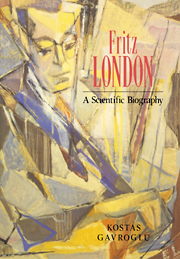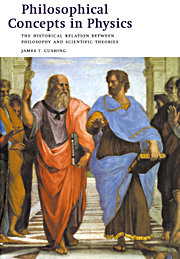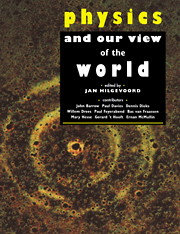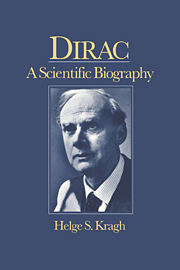Fritz London
Fritz London was one of the twentieth century's key figures in the development of theoretical physics. A quiet and self-effacing man, he was one of the founders of quantum chemistry, and was the first to give a phenomenological explanation of superconductivity. This thoroughly researched biography gives a detailed account of London's life and work in Munich, Berlin, Oxford, Paris, and finally in the United States. Covering a fascinating period in the development of theoretical physics, and containing an appraisal of London's work by the late John Bardeen, this book will be of great interest to physicists, chemists, and to anyone interested in the history of science.
- In-depth study of a key figure in twentieth-century theoretical physics
- Interesting disputes on key scientists
- His life was signed by controversial European events
- Afterword by John Bardeen, twice Nobel Prize winner
Reviews & endorsements
'I am personally grateful for the full-length picture of a man from whom I learnt many things, who always had time for serious discussion and whose welcoming smile is among my happiest memories.' Brian Pippard, Nature
'… an informative book about an influential scientist ...' Cern Courier
'This book should be of special interest to physicists working in the fields pioneered by Fritz London, shedding light on a host of famous figures from the recent past.' European Journal of Physics
Product details
November 2005Paperback
9780521023191
324 pages
244 × 170 × 18 mm
0.515kg
22 b/w illus.
Available
Table of Contents
- Preface
- Acknowledgements
- Part I. From Philosophy to Physics: The years that left nothing unaffected
- 1. The appeal of ideas
- 2. Goëthe as a scientist
- 3. How absolute is our knowledge?
- 4. How do we come to know things?
- 5. London's teachers in philosophy
- 6. Husserl's teachings
- 7. Expectations of things to come
- 8. The thesis in philosophy
- 9. Tolman's principle of similitude
- 10. The necessary clarifications
- 11. Work on quantum theory
- 12. Transformation theory
- 13. Unsuccessful attempts at unification
- Part II. The Years in Berlin and the Beginnings of Quantum Chemistry: The mysterious bond
- 14. London in Zürich
- 15. Binding forces
- 16. The Pauli principle
- 17. Reactions to the Heitler-London paper
- 18. Polyelectronic molecules and the application of group theory to problems of chemical valence
- 19. Chemists as physicists?
- 20. London's first contacts in Berlin
- 21. Marriage
- 22. Job offers
- 23. Intermolecular forces
- 24. The book which could not be written
- 25. Leningrad and Rome
- 26. Difficulties with group theory
- 27. Linus Pauling's resonance structures
- 28. Robert Mulliken's molecular orbitals
- Part III. Oxford and Superconductivity: The rise of the Nazis
- 29. Going to Oxford
- 30. Lindemann, Simon and Heinz London
- 31. Electricity in the very cold
- 32. The end of old certainties
- 33. The thermodynamic treatment
- 34. The theory of Fritz and Heinz London
- 35. Initial reactions by von Laue
- 36. The discussion at the Royal Society
- 37. Termination of the ICI fellowship
- Part IV. Paris and Superfluidity: The Front Populaire
- 38. The article in Nature 1937 and 'Nouvelle Conception'
- 39. Laue again
- 40. The structure of solid helium
- 41. The peculiar properties of helium
- 42. Bose-Einstein condensation
- 43. The note in Nature
- 44. The two-fluid model
- 45. The trip to Jerusalem
- 46. Leaving again
- 47. The observer in quantum mechanics
- Part V. United States and the Typing up of Loose Ends: Duke University, North Carolina
- 48. The Soviet Union, Kapitza and Landau
- 49. The war years
- 50. The 1946 Cambridge Conference
- Unsettled and unsettling issues in superfluidity and superconductivity
- 51. Heisenberg's theory and London's program for a microscopic theory
- 52. More problems with Laue
- Hopeful signs from helium-3
- 53. 'Second sound' at very low temperatures
- 54. Writing Superfluids
- 55. The trip to Europe
- 56. Some developments in superconductivity
- 57. An ugly finale
- 58. Could Landau be right?
- 59. The worrisome realities of the post-war era
- 60. The second volume of Superfluids
- 61. William Fairbank
- 62. Further developments
- 63. The Lorentz Model
- 64. Consultantship at Los Alamos and the interview for security clearance
- 65. The last days
- List of publications of Fritz London
- Bibliography.





